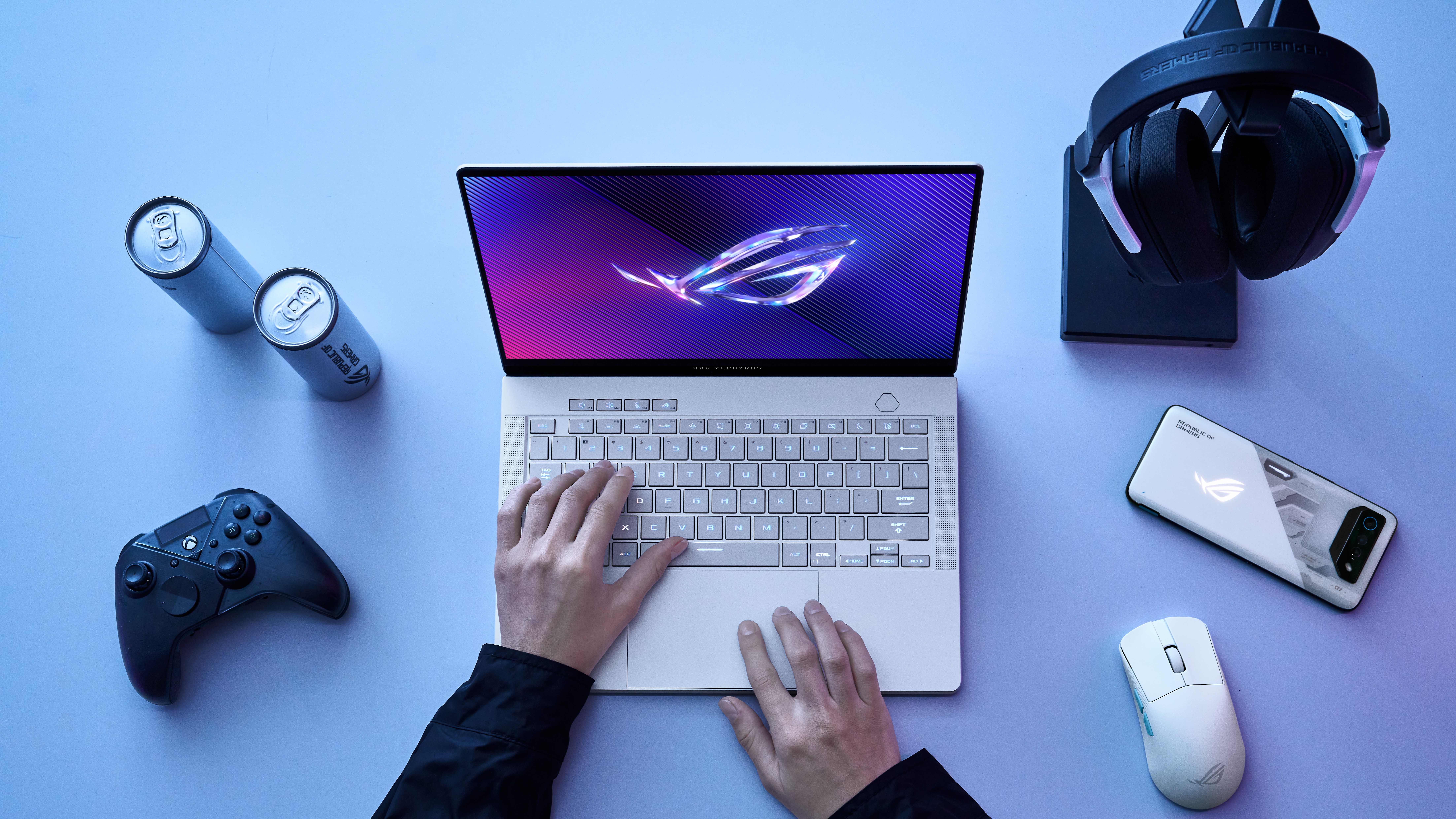CES 2024 is currently in full swing in Las Vegas, which means we’ll have a long-awaited cavalcade of new tech products. If you’re a laptop nerd (like me), you’ve probably been keeping an eye on Asus’ new hardware, and the company delivered as expected: with a selection of six new gaming laptops under its Republic of Gamers (ROG). ) brand.
The main event, of course, is the titanic new Asus ROG Strix Scar 18: a monster machine with a massive 18-inch screen and a full-size keyboard. It is joined by its little brother, the ROG Strix Scar 16, which is still not far behind despite its smaller screen.
There are also a pair of more affordable Strix laptops, the ROG Strix G16 and G18, which will no doubt be solid contenders for the crown of best gaming laptops, and won’t share the high entry price of the Scar models, which start in a wallet. – £3,999.99 in the UK (regional pricing to follow; Strix G laptops launching later this year).
What intrigues me most, however, is the elegant redesign of the ROG Zephyrus G14 and G16 that Asus showed off. With a clean exterior chassis marked only by a diagonal LED lighting bar, these two thin and light gaming laptops look more like something a professional would use, but without compromising on the power under the hood. That’s the kind of gaming system I wouldn’t be embarrassed to bring to the office, but more on that later.
ROG Strix Scar 16 and 18: bigger, better
Taking a look at the top laptops first, both new Strix Scar models will feature an Intel Core 14900HX CPU and an Nvidia RTX 4090 graphics card, marking them as the absolute top tier of laptops (and I use that word somewhat generously, given the size of these laptops) gaming hardware. Up to 64GB of DDR5 RAM and a triple-fan cooling system work to ensure those components are free from limitations.
Visualization is of particular interest here; an 18 or 16-inch mini-LED panel with 2.5K resolution and an ultra-responsive 240Hz refresh rate, validated by Pantone for superior color accuracy and delivering an impressive 1,100 nits of peak brightness.
An interesting new feature here is the interchangeable ‘armor caps’ on the rear edge of the laptop, which can be customized to your liking to better display the RGB lighting on the back of the laptop. And luckily, Asus has joined the crowd to implement universal USB-C charging. Personally, I will not sadly say goodbye to the billion different varieties of proprietary laptop chargers.
The ROG Strix G laptops will be a little less powerful (and a little less expensive) and will top out at an RTX 4080 GPU with 32GB of RAM. That’s still a lot of laptop; We still don’t know what the cheaper versions will be like in terms of specifications.
The Strix G16 and G18 still feature the same triple-fan cooling system and Thunderbolt 4 support as the more powerful Scar models (although the latter has practically become a mandatory inclusion in gaming laptops at this point) , and although the screens are not quite high quality in terms of brightness or color accuracy, they still have the same 2.5K resolution and 240Hz refresh rate, with a fast 3ms response time, perfect for esports titles like valorant.
All four Strix laptops will feature Wi-Fi 6E, Dolby Atmos audio, and 90Wh batteries with fast charging support, a boon for anyone who likes to game on the go. The G-series systems don’t have the nifty interchangeable armor caps, but at least they have customizable RGB lighting.
ROG Zephyrus G14 and G16: power, professionalism
First, let me clarify one thing: I’ve loved the ROG Zephyrus G14 since its debut in 2020, so I’d obviously be excited to see a new model. However, this elegant redesign is even better than I expected.
At just 1.5kg and 1.59cm thick, the 2024 model of Asus’ premium gaming ultrabook looks fantastic. This aesthetic is as clean as possible; a pristine aluminum outer casing in white or gray, with a stainless steel bar on the lid that glows softly with customizable LED lighting. Visually, at least, this is what compact gaming laptops should aspire to be.
The display doesn’t disappoint either: a gorgeous 3K OLED panel with Pantone and VESA DisplayHDR certifications that make it a viable option for professional work like video editing or digital art, as well as gaming. The Zephyrus G14 also receives a six-speaker upgrade, which Asus says makes it 252% louder than the previous model at maximum volume.

Asus has stuck to its previous rule of using AMD processors for the Zephyrus G14, and the new model includes the latest Ryzen 8000 processors, which feature Ryzen AI. Similarly, the G16 model will use Intel’s new Core Ultra CPUs, which use Intel’s dedicated on-chip neural processing unit (NPU) to accelerate AI workloads.
However, both the 14-inch and 16-inch Zephyrus models will use Nvidia GPUs, with the G14 outperforming the RTX 4070, while the G16 can be configured up to a beefy RTX 4090. Both come with 32GB of DDR5 and, just as The new Strix laptops feature improved batteries with fast charging.
Interestingly, the Zephyrus G16 has a slightly lower screen resolution than its smaller brother (2.5K instead of 3K), but comes with twice the refresh rate to balance things out. Lastly, both laptops have “hidden hinge technology,” which… well, I’m not entirely sure what that is. Asus wasn’t forthcoming about this in the press release, but I’m assuming It’s a new hinge design that allows the laptop to be even slimmer than before. Would you mind enlightening us, Asus?
Take a look at our CES 2024 hub for the latest show news as it happens. We will cover everything from 8K From foldable TVs and screens to new phones, laptops, smart home devices and the latest in artificial intelligence, so stay with us for the big stories. And do not forget follow us on tiktok To find out the latest from the CES fair!








